
The Tranquil Beauty of Apoyo Lagoon
Discover the serene beauty and rich biodiversity of Apoyo Lagoon, Nicaragua's hidden gem nestled in a volcanic crater, perfect for water activities and nature exploration.
Nestled in the heart of Nicaragua, Apoyo Lagoon is a pristine natural wonder that captivates visitors with its serene beauty. This volcanic crater lake is a haven of tranquility, offering a perfect escape from the hustle and bustle of everyday life. The lagoon's crystal-clear waters are ideal for swimming, kayaking, and paddleboarding, making it a favorite spot for water enthusiasts. Surrounded by lush tropical forests, Apoyo Lagoon is also a paradise for nature lovers. The area is home to a rich variety of flora and fauna, including vibrant bird species and playful monkeys. Hiking trails around the lagoon provide breathtaking views and opportunities to explore the diverse ecosystem. The local communities around Apoyo Lagoon are warm and welcoming, offering visitors a taste of authentic Nicaraguan culture. From delicious local cuisine to artisanal crafts, there is much to discover in this hidden gem of Central America.
Local tips in Apoyo Lagoon
- Visit during the dry season from November to April for the best weather and clear skies.
- Bring biodegradable sunscreen to protect the lagoon's delicate ecosystem.
- Consider staying in eco-lodges to fully immerse yourself in the natural surroundings.
- Try the local fish dishes at nearby restaurants for a true taste of the region.
- Don't forget your binoculars for birdwatching; the area is home to many exotic species.
The Tranquil Beauty of Apoyo Lagoon
Nestled in the heart of Nicaragua, Apoyo Lagoon is a pristine natural wonder that captivates visitors with its serene beauty. This volcanic crater lake is a haven of tranquility, offering a perfect escape from the hustle and bustle of everyday life. The lagoon's crystal-clear waters are ideal for swimming, kayaking, and paddleboarding, making it a favorite spot for water enthusiasts. Surrounded by lush tropical forests, Apoyo Lagoon is also a paradise for nature lovers. The area is home to a rich variety of flora and fauna, including vibrant bird species and playful monkeys. Hiking trails around the lagoon provide breathtaking views and opportunities to explore the diverse ecosystem. The local communities around Apoyo Lagoon are warm and welcoming, offering visitors a taste of authentic Nicaraguan culture. From delicious local cuisine to artisanal crafts, there is much to discover in this hidden gem of Central America.
When is the best time to go to Apoyo Lagoon?
Iconic landmarks you can’t miss
Mirador de Catarina
Explore the stunning Mirador de Catarina for breathtaking views of Lake Nicaragua and Mombacho Volcano, capturing the essence of Nicaragua's natural beauty.
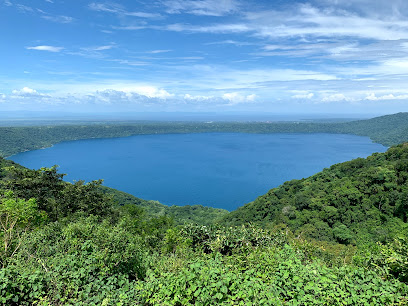
Parque Central de Granada
Explore the vibrant heart of Granada at Parque Central, where culture, history, and nature come together in a stunning city park.

Masaya Central Park
Explore the vibrant Masaya Central Park, a cultural hub blending nature, local crafts, and historical significance in the heart of Nicaragua.

Zoológico Nacional de Nicaragua
Explore the vibrant biodiversity at the Zoológico Nacional de Nicaragua, a family-friendly zoo showcasing native wildlife in a lush tropical setting.

Reserva Natural Volcán Mombacho
Discover the breathtaking landscapes and rich biodiversity of Reserva Natural Volcán Mombacho, an unforgettable nature preserve near Granada, Nicaragua.

Hotel Posada Ecologica la Abuela
Discover the charm of Masaya at Hotel Posada Ecologica la Abuela, where comfort meets Nicaraguan tradition in an eco-friendly setting.

Paradiso Hostel & Restaurante
Discover the perfect blend of relaxation and adventure at Paradiso Hostel & Restaurante, a hidden gem by Laguna de Apoyo in Nicaragua.

Reserva Natural Laguna de Tiscapa
Explore the serene Tiscapa Natural Reserve in Managua, where stunning views, rich history, and diverse wildlife await every visitor.

Xalteva Park
Discover the serene beauty of Xalteva Park in Granada, a perfect blend of nature and local culture for every traveler.

Laguna Beach Club
Experience luxury and tranquility at Laguna Beach Club, a serene hotel on the stunning shores of Catarina, Nicaragua.

Punta El Cacique
Discover Punta El Cacique, a culinary haven in La Laguna, Nicaragua, offering delicious local dishes and a lively bar atmosphere for tourists.

Apoyo Resort & Conference Center
Experience the perfect blend of relaxation and adventure at Apoyo Resort & Conference Center, your gateway to the stunning Apoyo Lagoon.

El Boquete
Experience stunning views and serene surroundings at El Boquete, a premier observation deck in Diriá, Nicaragua, perfect for nature lovers and photographers.

Laguna De Apoyo
Experience the serene beauty of Laguna De Apoyo, a stunning volcanic crater lake in Nicaragua, perfect for relaxation and nature exploration.

Casa Marimba
Discover the serene beauty of Casa Marimba, a charming bed & breakfast by the stunning Laguna de Apoyo, offering relaxation and adventure in nature.

Unmissable attractions to see
Zoológico Nacional de Nicaragua
Experience the rich biodiversity at Zoológico Nacional de Nicaragua, where conservation meets adventure in a lush, family-friendly environment.

Xalteva Park
Discover tranquility in Granada's Xalteva Park, where lush gardens and vibrant local culture come together for a perfect escape.

Mirador turístico Nandasmo
Experience the breathtaking vistas at Mirador Turístico Nandasmo, a top tourist attraction in Vista Alegre, Nicaragua, perfect for nature lovers and photographers.

San Miguel Park
Discover tranquility and natural beauty at San Miguel Park, a lush oasis in the heart of Masaya, Nicaragua.

La Polvora Fortress
Explore La Polvora Fortress in Granada, a historical gem showcasing stunning architecture and breathtaking views of Nicaragua's landscape.

Senderos Mirador De Catarina
Explore the scenic beauty of Senderos Mirador De Catarina, a premier hiking destination in Nicaragua with stunning views of Lake Cocibolca.

San Pablo Fortress
Discover the historical significance and breathtaking views of San Pablo Fortress in Santa Cruz, a must-visit tourist attraction in Nicaragua.

Parque Los leones
Explore the serene beauty of Parque Los Leones in Masaya, a perfect spot for relaxation and family fun amidst lush greenery and vibrant nature.

Sor Maria Romero Birthplace
Explore the legacy of Sor Maria Romero at her birthplace museum in Granada, Nicaragua, and discover the heart of Nicaraguan culture and history.

Heliconias de Nicaragua
Immerse yourself in the vibrant beauty of Heliconias de Nicaragua, a mesmerizing botanical garden showcasing exotic flora and breathtaking views.

Finca El Rayo
Experience the natural beauty and culinary delights of Finca El Rayo, a hidden gem in Granada, Nicaragua, perfect for peaceful retreats and authentic dining.

Folklore Museum
Explore the Folklore Museum in Masaya, a vibrant showcase of Nicaraguan culture, art, and traditions that brings local heritage to life.

Sendero EL CABALLITO
Explore Sendero El Caballito in Nicaragua, a stunning hiking area with breathtaking views and diverse wildlife, perfect for nature lovers and adventurers.

Parque Azul
Explore the serene beauty of Parque Azul in Granada, a perfect retreat for relaxation and nature appreciation amidst the vibrant city life.
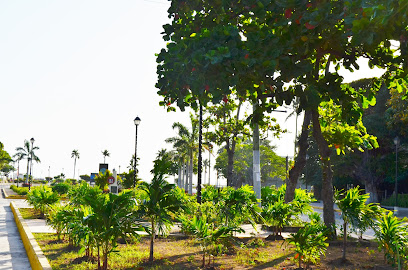
Rotonda San Jeronimo
Experience the vibrant culture and history at Rotonda San Jeronimo in Masaya, a picturesque tourist attraction in Nicaragua.

Essential places to dine
Mi Viejo Ranchito
Savor traditional Nicaraguan flavors at Mi Viejo Ranchito - where every dish tells a story amidst stunning views.

Paradiso Hostel & Restaurante
Experience tranquility and taste at Paradiso Hostel & Restaurante near Laguna de Apoyo – where comfort meets adventure in stunning natural surroundings.

Punta El Cacique
Experience the authentic flavors of Nicaragua at Punta El Cacique in La Laguna – where every meal tells a story.
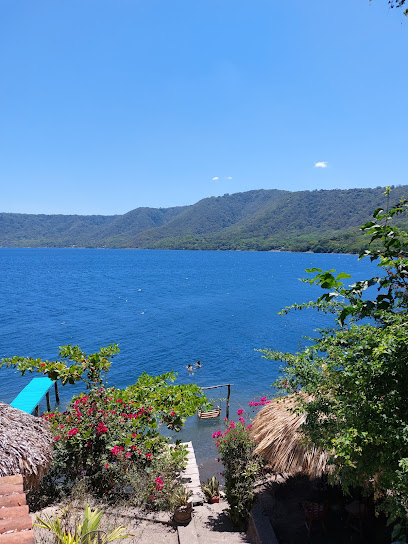
Restaurante El Paso del Tren
Experience authentic Nicaraguan grilling at Restaurante El Paso del Tren in Masaya - where every bite tells a flavorful story.

Casa Marimba
Discover tranquility at Casa Marimba – your serene getaway by the breathtaking Laguna de Apoyo.

Casa de la Güirila
Experience authentic Nicaraguan cuisine at Casa de la Güirila near Laguna de Apoyo—where every bite tells a story.

San Simian Eco Lodge
Discover tranquility at San Simian Eco Lodge, where comfort meets nature on the shores of stunning Laguna de Apoyo.

La cueva del Tigre
Experience vibrant flavors at La Cueva del Tigre in La Laguna—where local ingredients meet culinary creativity in a warm atmosphere.
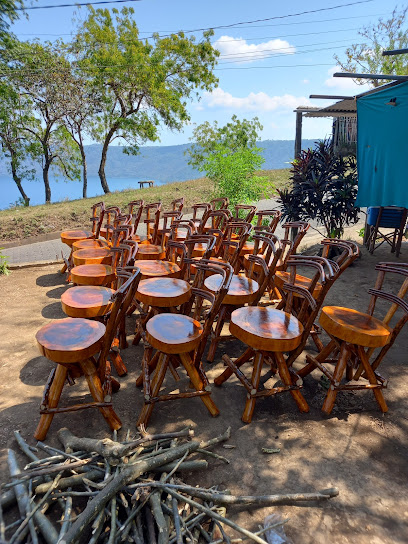
Montes Verde Restaurante
Experience authentic Nicaraguan cuisine at Montes Verde Restaurante in La Laguna, where stunning views meet delightful flavors.
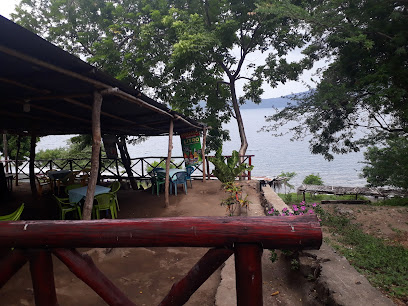
Laguna de Apoyo, Restaurante.
Experience authentic Nicaraguan cuisine at Laguna de Apoyo Restaurant, surrounded by breathtaking views and serene waters.

Guirilas La Abuelita
Experience the essence of Nicaraguan cuisine at Guirilas La Abuelita by Laguna de Apoy with stunning views and authentic flavors.

Comedor Angelito
Experience the heart of Nicaraguan cuisine at Comedor Angelito in La Laguna—where tradition meets flavor.

Restaurante Latino
Discover authentic Nicaraguan flavors at Restaurante Latino in Catarina – where every meal tells a story.
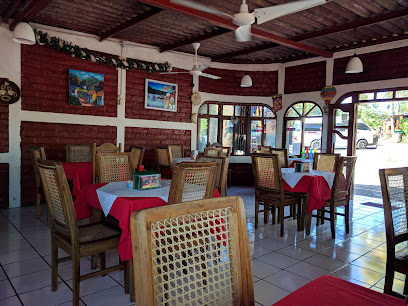
Restaurante Esperanza
Discover authentic Nicaraguan cuisine at Restaurante Esperanza in Catarina – a delightful dining experience awaits!
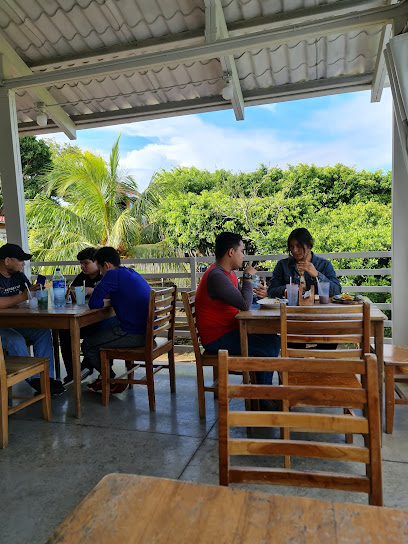
Restaurante Los Ranchos
Discover Restaurante Los Ranchos in La Laguna - where traditional Nicaraguan flavors meet warm hospitality in a charming setting.

Markets, malls and hidden boutiques
Casa Marimba
Discover the serene beauty of Casa Marimba, your ultimate destination for relaxation, dining, and unique gifts in the heart of Laguna De Apoyo.

Volcano Divers
Experience the thrill of diving in Nicaragua's stunning Laguna de Apoyo with expert guides at Volcano Divers, where adventure meets tranquility.

Venta De Flores Y Rosas
Discover the beauty of Nicaraguan flora at Venta De Flores Y Rosas, your destination for stunning flowers and unique home decor in Catarina.

Hypoxic Monkey
Discover Hypoxic Monkey, a serene coffee shop in Catarina, offering exquisite brews and stunning views near Laguna de Apoyo.

Reparto San Manuel
Discover the essence of Nicaragua at Reparto San Manuel, where local produce and artisanal goods await your exploration.

El Triangulo
Explore authentic Nicaraguan flavors at El Triangulo, the ultimate grocery store in Catarina for local and international delights.

Perlas Store
Explore the vibrant culture of Nicaragua at Perlas Store, where unique handcrafted treasures await every tourist in the heart of Catarina.

Mini Super
Explore Mini Super in Catarina for a unique shopping experience filled with local treasures and charming home goods.
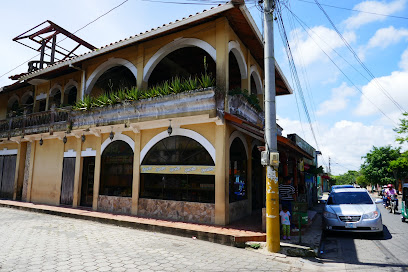
Venta De Resfresco Naturales
Discover the vibrant flavors of Nicaragua at Venta De Resfresco Naturales – a refreshing stop in the heart of Valle La Laguna.

Artes del pueblo
Explore Artes del Pueblo, a vibrant gift shop in San Juan de Oriente, showcasing unique Nicaraguan crafts and supporting local artisans.

Mary'sclothes
Experience the vibrant spirit of Nicaragua with unique clothing from Mary'sclothes, a hidden gem in Diriá.

Madera's
Explore the vibrant craftsmanship of Nicaragua at Madera's, where every item reflects the rich local culture and artistry.

Artesanías Almanza Pavón
Explore the rich artisan culture of Nicaragua at Artesanías Almanza Pavón, where unique handcrafted treasures await every visitor.

Magic Fashions Nicaragua
Explore the vibrant world of Nicaraguan fashion at Magic Fashions Nicaragua, where unique styles and local craftsmanship meet in the heart of Catarina.

Mini Market Line
Discover the essence of local culture and flavors at Mini Market Line, your go-to destination for snacks and unique products in Nicaragua.

Essential bars & hidden hideouts
Punta El Cacique
Experience the rich flavors of Nicaragua at Punta El Cacique, a vibrant restaurant and bar & grill in La Laguna offering a delightful culinary journey.

ChillyS Bar Lounge
Discover the vibrant nightlife at ChillyS Bar Lounge in Catarina, where refreshing drinks and a lively atmosphere await every visitor.

Moca Sport Bar
Experience the vibrant nightlife at Moca Sport Bar in Catarina, where great drinks and a lively atmosphere create unforgettable moments.

BAR EL MIRADORCITO
Experience breathtaking views and a vibrant atmosphere at Bar El Miradorcito, the ultimate bar in Valle La Laguna, Nicaragua.

Vikingo's Bar
Experience the vibrant nightlife and authentic flavors of Nicaragua at Vikingo's Bar, the perfect spot for relaxation and socializing.

Vista laguna azul
Discover the serene beauty and vibrant atmosphere at Vista Laguna Azul, a perfect bar to unwind with stunning lake views.

Chapo's Bar
Experience the vibrant atmosphere of Chapo's Bar in Niquinohomo, where locals and tourists enjoy refreshing drinks and rich Nicaraguan culture.

Nocturno Bar Y Restaurante Tipo Campestre
Discover Nocturno Bar Y Restaurante Tipo Campestre – a rustic bar and grill in Pacaya, offering delicious grilled dishes in a scenic outdoor setting.

Nueva Guinea Nicaragua
Unwind at Nueva Guinea, a cultural bar in Nicaragua, where local flavors and vibrant nightlife come alive in an inviting atmosphere.

LA TERMINAL grill homies pub and food
Experience authentic Nicaraguan flavors at LA TERMINAL Grill Homies Pub, where grilling meets a vibrant atmosphere in Masaya.

BAR LA CUBETA
Discover the vibrant nightlife of Masaya at Bar La Cubeta, where local flavors and friendly faces create unforgettable experiences.

Rancho Latino
Experience the vibrant flavors of Nicaragua at Rancho Latino, a top grill restaurant in Pacaya, where every meal is a culinary celebration.

Bar y billares suazo
Discover the vibrant atmosphere of Bar y Billares Suazo, a perfect blend of drinks, billiards, and local culture in Nicaragua.

Nativo's Grill and Beer
Experience the best of local cuisine at Nativo's Grill and Beer in Catarina, where grilled specialties meet refreshing beer in a stunning setting.

Carpe Diem
Discover Carpe Diem: A vibrant bar and restaurant in Diriá, Nicaragua, serving delightful cuisine and refreshing drinks in a lively atmosphere.

Local Phrases about Apoyo Lagoon
-
- HelloHola
[oh-lah] - GoodbyeAdiós
[ah-dee-ohs] - YesSí
[see] - NoNo
[noh] - Please/You're welcomePor favor
[por fah-vor] - Thank youGracias
[grah-see-ahs] - Excuse me/SorryDisculpe
[dees-kool-peh] - How are you?¿Cómo estás?
[koh-moh ehs-tahs] - Fine. And you?Bien. ¿Y tú?
[byen. ee too] - Do you speak English?¿Hablas inglés?
[ah-blahs een-glehs] - I don't understandNo entiendo
[noh ehn-tee-ehn-doh]
- HelloHola
-
- I'd like to see the menu, pleaseMe gustaría ver el menú, por favor
[meh goo-stah-ree-ah behr ehl meh-noo, por fah-vor] - I don't eat meatNo como carne
[noh koh-moh kahr-neh] - Cheers!¡Salud!
[sah-lood] - I would like to pay, pleaseMe gustaría pagar, por favor
[meh goo-stah-ree-ah pah-gahr, por fah-vor]
- I'd like to see the menu, pleaseMe gustaría ver el menú, por favor
-
- Help!¡Ayuda!
[ah-yoo-dah] - Go away!¡Vete!
[veh-teh] - Call the Police!¡Llama a la policía!
[yah-mah ah lah poh-lee-see-ah] - Call a doctor!¡Llama a un doctor!
[yah-mah ah oon dohk-tohr] - I'm lostEstoy perdido
[ehs-toy pehr-dee-doh] - I'm illEstoy enfermo
[ehs-toy ehn-fehr-moh]
- Help!¡Ayuda!
-
- I'd like to buy...Me gustaría comprar...
[meh goo-stah-ree-ah kohm-prahr...] - I'm just lookingSólo estoy mirando
[soh-loh ehs-toy meer-ahn-doh] - How much is it?¿Cuánto cuesta?
[kwahn-toh kwehs-tah] - That's too expensiveEso es demasiado caro
[eh-soh ehs deh-mah-see-ah-doh kah-roh] - Can you lower the price?¿Puedes bajar el precio?
[pweh-dehs bah-har ehl pree-eh-soh]
- I'd like to buy...Me gustaría comprar...
-
- What time is it?¿Qué hora es?
[keh oh-rah ehs] - It's one o'clockEs la una en punto
[ehs lah oo-nah ehn poon-toh] - Half past (10)Las diez y media
[lahs dyehs ee meh-dee-ah] - MorningMañana
[mah-nyah-nah] - AfternoonTarde
[tahr-deh] - EveningNoche
[noh-cheh] - YesterdayAyer
[ah-yehr] - TodayHoy
[oy] - TomorrowMañana
[mah-nyah-nah] - 1Uno
[oo-noh] - 2Dos
[dohs] - 3Tres
[trehs] - 4Cuatro
[kwah-troh] - 5Cinco
[seen-koh] - 6Seis
[sehs] - 7Siete
[syeh-teh] - 8Ocho
[oh-choh] - 9Nueve
[nweh-veh] - 10Diez
[dyehs]
- What time is it?¿Qué hora es?
-
- Where's a/the...?¿Dónde está...?
[dohn-deh ehs-tah] - What's the address?¿Cuál es la dirección?
[kwahl ehs lah dee-rek-syohn] - Can you show me (on the map)?¿Puedes mostrarme (en el mapa)?
[pweh-dehs mohs-trar-meh (ehn ehl mah-pah)] - When's the next (bus)?¿Cuándo es el próximo (autobús)?
[kwan-doh ehs ehl proh-ksee-moh (ow-toh-boos)] - A ticket (to ....)Un boleto (a ....)
[oon boh-leh-toh (ah ....)]
- Where's a/the...?¿Dónde está...?
History of Apoyo Lagoon
-
Long before the arrival of the Spanish conquistadors, Apoyo Lagoon was a central part of the lives of indigenous peoples. Archaeological findings suggest the presence of pre-Columbian settlements around the lagoon, with artifacts like pottery and tools indicating a rich cultural history. The indigenous tribes who lived here were likely part of the larger Chorotega and Niquirano cultures, known for their advanced agricultural practices and intricate social structures.
-
Apoyo Lagoon was formed approximately 23,000 years ago following a massive volcanic eruption. The explosion left behind a huge crater, which eventually filled with water to create the stunning lake we see today. The crater's steep walls and the pristine waters of the lagoon are a testament to the powerful geological forces that shaped this region.
-
The arrival of the Spanish in the 16th century brought profound changes to the area surrounding Apoyo Lagoon. The Spanish were drawn to the region due to its fertile lands and strategic location. They introduced new agricultural practices and livestock, which significantly altered the local ecosystem. The Spanish also brought Christianity, leading to the construction of churches and the establishment of new settlements around the lagoon.
-
In recent years, Apoyo Lagoon has become a popular destination for both locals and tourists. Efforts have been made to preserve its natural beauty and ecological significance. The lagoon is now part of a national nature reserve, which aims to protect the area's unique biodiversity. Activities such as hiking, bird-watching, and water sports are popular among visitors, who come to enjoy the serene environment and explore the rich history of the region.
-
The importance of Apoyo Lagoon extends beyond its historical and cultural value. It is a critical habitat for numerous species of flora and fauna, some of which are endemic to the area. The lagoon's clear waters and surrounding forests support a diverse range of wildlife, making it a vital ecological zone. Conservation efforts are ongoing to ensure that this natural treasure is preserved for future generations.
Apoyo Lagoon Essentials
-
Apoyo Lagoon is located in the Masaya department of Nicaragua, roughly 45 kilometers southeast of the capital city, Managua. The closest international airport is Augusto C. Sandino International Airport (MGA) in Managua. From Managua, you can hire a taxi or rent a car to reach the lagoon, which typically takes about an hour by road. Alternatively, you can take a bus from the UCA terminal in Managua to the nearby town of Masaya and then catch a local taxi or shuttle to the lagoon.
-
Once at Apoyo Lagoon, getting around is generally straightforward. Most accommodations and attractions are within walking distance. For longer excursions, local taxis and shuttle services are available. Renting a car can also be a convenient option, especially if you plan to explore other nearby attractions like Granada or Masaya Volcano National Park.
-
The official currency in Nicaragua is the Nicaraguan Córdoba (NIO). US Dollars are also widely accepted, especially in tourist areas. Credit cards are accepted in most hotels, restaurants, and larger shops, but it's advisable to carry some cash for smaller establishments and local markets. ATMs can be found in nearby towns like Masaya and Granada, so withdrawing cash before heading to the lagoon is recommended.
-
Apoyo Lagoon is generally considered safe for tourists. However, it's wise to take standard precautions. Avoid walking alone at night in secluded areas and always keep an eye on your belongings. While the lagoon itself is safe, nearby cities like Masaya and Managua have areas with higher crime rates, particularly targeting tourists. Always stay alert and avoid displaying valuables openly.
-
In case of an emergency, dial 118 for police assistance or 128 for medical emergencies. It's advisable to have travel insurance that covers medical emergencies. The nearest medical facilities are in Masaya and Granada, which have hospitals and clinics. For minor health issues, there are pharmacies in these towns where you can purchase over-the-counter medications.
-
Fashion: Do wear comfortable, casual clothing suitable for warm weather. Swimwear is appropriate at the lagoon but cover up when away from the water. Religion: Do respect local religious customs. If visiting churches or religious sites, dress modestly. Public Transport: Do be courteous and respectful to drivers and fellow passengers. Don't eat or drink on public transport. Greetings: Do greet people with a friendly 'Hola' or 'Buenos días.' A handshake is common for formal introductions. Eating & Drinking: Do try local dishes and drinks. Don't refuse hospitality, as it is considered impolite.
-
To experience Apoyo Lagoon like a local, consider visiting during the weekdays when it is less crowded. Rent a kayak or paddleboard to explore the lagoon's clear waters. Engage with local vendors and try traditional Nicaraguan snacks like 'vigorón' or 'quesillo.' For a unique experience, visit the nearby town of Catarina for its famous viewpoint offering panoramic views of the lagoon and surrounding areas. Don't miss the opportunity to hike around the crater rim for breathtaking scenery and wildlife spotting.
Trending Landmarks in Apoyo Lagoon
-
Mirador de Catarina
-
Parque Central de Granada
-
Masaya Central Park
-
Zoológico Nacional de Nicaragua
-
Reserva Natural Volcán Mombacho
-
Hotel Posada Ecologica la Abuela
-
Paradiso Hostel & Restaurante
-
Reserva Natural Laguna de Tiscapa
-
Xalteva Park
-
Laguna Beach Club
-
Punta El Cacique
-
Apoyo Resort & Conference Center
-
El Boquete
-
Laguna De Apoyo
-
Casa Marimba
Nearby Cities to Apoyo Lagoon
-
Things To Do in Masaya
-
Things To Do in Managua
-
Things To Do in Rivas
-
Things To Do in Ometepe
-
Things To Do in San Juan del Sur
-
Things To Do in Jinotega
-
Things To Do in Liberia
-
Things To Do in Playa Flamingo
-
Things To Do in Guanacaste
-
Things To Do in Tamarindo
-
Things To Do in La Fortuna
-
Things To Do in Monteverde
-
Things To Do in Tegucigalpa
-
Things To Do in San Miguel
-
Things To Do in Jaco








